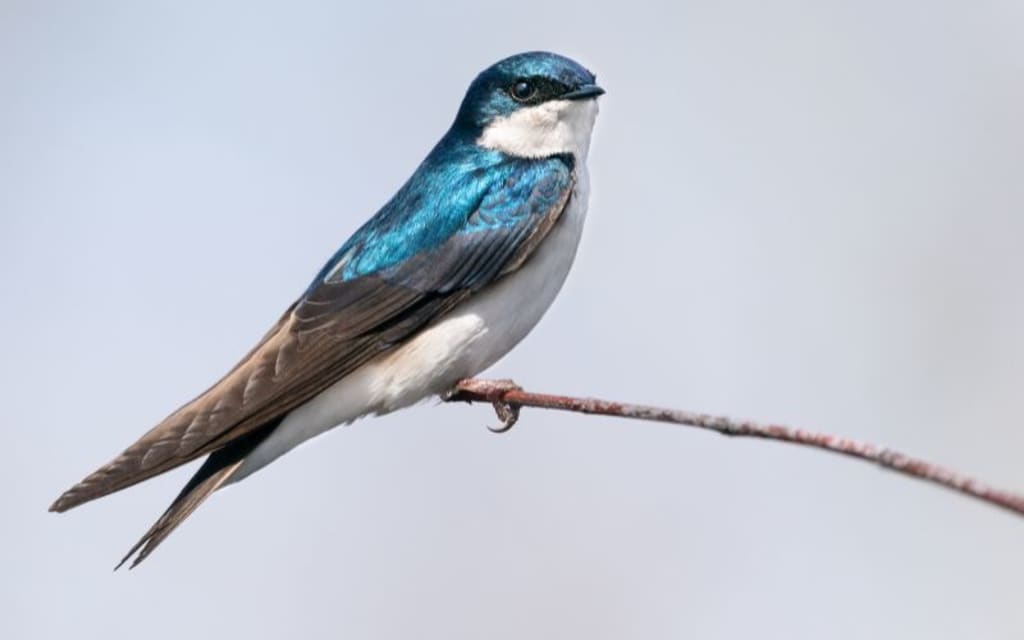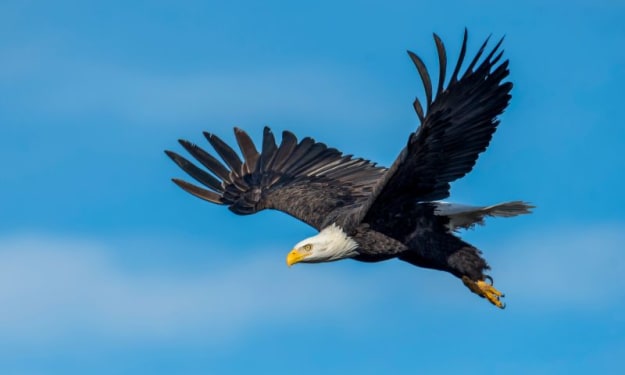Content warning
This story may contain sensitive material or discuss topics that some readers may find distressing. Reader discretion is advised. The views and opinions expressed in this story are those of the author and do not necessarily reflect the official policy or position of Vocal.
A Closer Look at What Does a Swallow Look Like
Unveiling the Beauty

Introduction to Swallows
Swallows, with their graceful flight and vibrant colors, have always captured the imagination of bird enthusiasts and nature lovers alike. These small, agile birds belong to the family Hirundinidae and are found all around the world, except in polar regions. In this article, we will delve into the physical characteristics, behavior, and unique features of swallows, shedding light on what makes them truly fascinating creatures.
Physical Characteristics of Swallows
Swallows are known for their streamlined bodies and long, pointed wings, which allow them to soar through the air with incredible speed and agility. They have forked tails that help with aerial maneuverability and are adorned with vibrant plumage. The colors of swallows vary depending on the species, but they often display a combination of blues, greens, and browns. Their beaks are short and wide, designed for catching insects mid-flight, their primary source of sustenance.
One distinguishing feature of swallows is their small size. On average, they measure between 12 and 20 centimeters in length, weighing around 15-30 grams. Despite their diminutive stature, these birds have a strong and sturdy build, allowing them to undertake long migrations and withstand the rigors of their aerial lifestyle.
Different Species of Swallows and Their Unique Features
There are over 80 species of swallows worldwide, each with its own unique characteristics. One of the most well-known species is the Barn Swallow (Hirundo rustica), easily recognizable by its deep blue plumage on the back, rusty-colored throat, and long, forked tail. Another notable species is the Tree Swallow (Tachycineta bicolor), which has a metallic blue-green upper body and white underparts. The Cliff Swallow (Petrochelidon pyrrhonota) is distinguished by its square-shaped tail and a buff-colored rump.
Other species, such as the Violet-green Swallow (Tachycineta thalassina) and the Bank Swallow (Riparia riparia), boast their own unique features, ranging from colorful plumage to distinct nesting habits. Each species of swallow has its own story to tell, adding to the diversity and beauty of these avian wonders.
Habitat and Distribution of Swallows
Swallows are highly adaptable birds and can be found in a variety of habitats, including forests, grasslands, wetlands, and even urban areas. They prefer open spaces with access to water, as it provides ample opportunities to catch flying insects. Swallows have a wide distribution, with some species found exclusively in certain regions, while others are migratory and cover vast distances during different times of the year.
For example, the Purple Martin (Progne subis) is native to North America and spends its winters in South America, undertaking an impressive migration journey. The Red-rumped Swallow (Cecropis daurica) is a migratory species that breeds in Europe and Asia but winters in Africa. The ability of swallows to adapt to various environments and navigate through long-distance journeys is a testament to their resilience and resourcefulness.
Swallow Behavior and Feeding Habits
Swallows are highly skilled aerial hunters, relying on their agility and speed to catch insects while in flight. They have a unique feeding behavior called aerial hawking, where they chase and capture flying insects on the wing. Swallows are also known for their acrobatic flight patterns, performing impressive aerial displays as they swoop and dive through the air.
These birds are social creatures and often form large colonies, nesting together in suitable locations such as cliffs, barns, or man-made structures. Swallows are known for their intricate nest-building skills, constructing cup-shaped nests using mud, twigs, and feathers. They are fiercely protective of their nests and will defend them from any potential threats.
Interesting Facts about Swallows
Swallows are excellent navigators and use the position of the sun, stars, and Earth's magnetic field to find their way during migration.
Some species of swallows, such as the African River Martin (Pseudochelidon eurystomina), are considered rare and endangered, highlighting the importance of conservation efforts.
Swallows are known to engage in a behavior called "mud puddling," where they collect wet mud and use it for constructing or repairing their nests.
The oldest known Barn Swallow lived for over 11 years, a remarkable lifespan for such a small bird.
How to Identify a Swallow
Identifying a swallow can be a thrilling experience for birdwatchers. Although each species has its own unique features, there are some general characteristics that can help in identification. Look for a small bird with a streamlined body, long pointed wings, and a forked tail. Swallows often have vibrant plumage, with colors ranging from blues and greens to browns and whites.
Pay attention to the bird's flight pattern, as swallows are known for their agile and acrobatic movements. They fly with rapid wingbeats and perform quick twists and turns while pursuing insects. Observing their behavior and flight style can provide valuable clues in identifying the particular species of swallow you are encountering.
Identification Challenges and Common Misconceptions
While identifying swallows can be an exciting endeavor, it is not without its challenges. Some species of swallows closely resemble each other, making it difficult to differentiate them based on appearance alone. In such cases, it becomes crucial to rely on additional cues such as habitat, geographic location, and behavior to make a more accurate identification.
Furthermore, there are common misconceptions regarding the appearance of swallows. Many people mistakenly believe that all swallows have the same coloration or that they only come in shades of blue. In reality, swallows exhibit a wide range of colors and patterns, showcasing the incredible diversity within this bird family.
Swallow Conservation and Protection Efforts
With the increasing threats to bird populations worldwide, including habitat loss and climate change, conservation efforts play a vital role in safeguarding swallows and their habitats. Various organizations and initiatives are working to protect nesting sites, raise awareness about the importance of preserving swallow populations, and contribute to scientific research on these remarkable birds.
Individuals can also contribute to swallow conservation by creating suitable nesting habitats, avoiding the use of harmful pesticides, and supporting local conservation organizations. By actively participating in the protection of swallows, we can ensure the continued existence of these beautiful creatures for generations to come.
Conclusion: Appreciating the Beauty of Swallows
Swallows are not only visually stunning birds but also possess remarkable adaptations and behaviors that make them truly captivating. Their streamlined bodies, long wings, and vibrant plumage set them apart, while their aerial acrobatics and insect-catching prowess never fail to impress. By understanding their physical characteristics, unique features, and habitat preferences, we can develop a deeper appreciation for the beauty and importance of swallows in our natural world.
About the Creator
Hasan
Welcome...
In this site of mine you can learn amazing things and many information that you don't know so please subscribe to my site.
Enjoyed the story? Support the Creator.
Subscribe for free to receive all their stories in your feed. You could also pledge your support or give them a one-off tip, letting them know you appreciate their work.






Comments
There are no comments for this story
Be the first to respond and start the conversation.